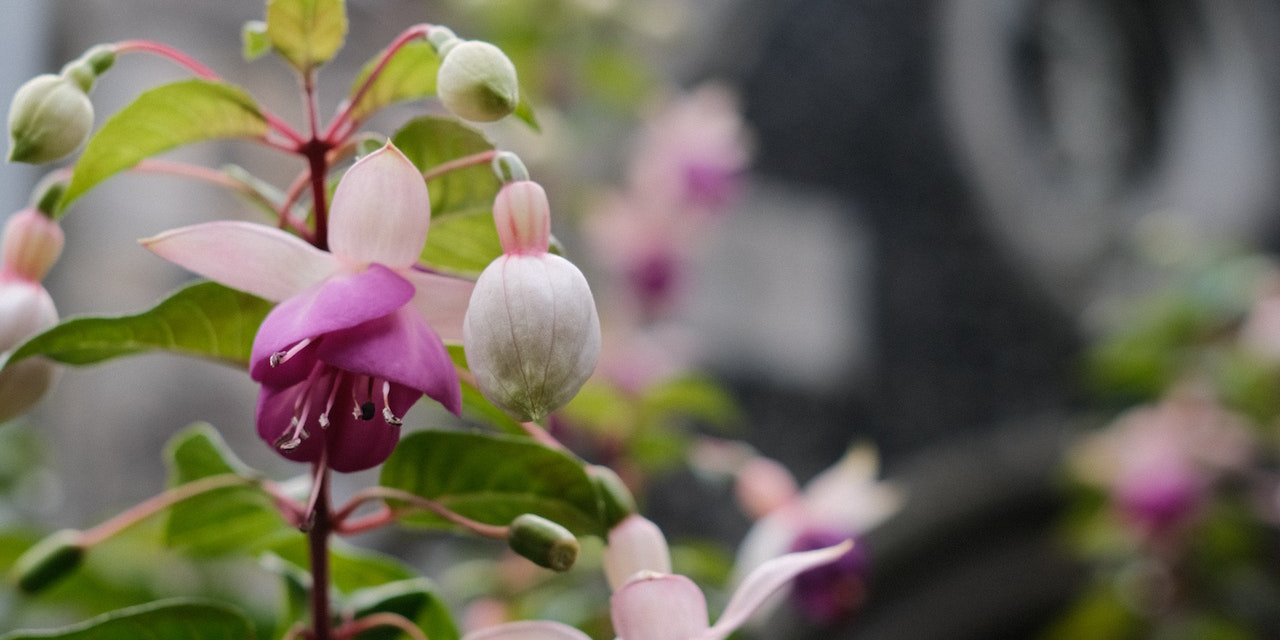My garden has always been my haven, but one plant had eluded me.
That is until I brought home the stunning Fuschia Swingtime.
After much searching, it was finally in my possession. The delicacy of its double blooms and the balance of white sepals, and red corolla was an enticing addition to my garden.
But, the early days could have been smoother sailing.
Initially, it struggled, grappling with flower and bud drop, which got me scratching my head. After investigating, I found the culprit: night-time temperatures dropping below 50 degrees. Our Sacramento Zone 9b winters seemed too cold for my tropical beauty.
Regulating Temperature: Don’t Let the Cold In
In response, I adapted.
Now, I keep my Fuschia Swingtime sheltered on colder nights. It’s a simple step, but it makes a world of difference. As the sun emerges, my plant basks in the early morning sun before Sacramento heats up.
Remember, they appreciate gentle morning light but scorching afternoon rays? Not so much.
Finding the Perfect Placement: Let there be (Morning) Light
Finding the perfect spot for a plant can feel like a game of Tetris, but it’s all part of the fun.
As the intense Sacramento heat sets in, I shield my Fuschia Swingtime under the west eave. The shade offers a cooling sanctuary during blistering afternoons. Additionally, I’ve decked the area out with 50% shade cloth to ensure my plant gets the optimum light it needs – bright but indirect.
Pruning: The Secret to Bushier Blooms
The tale takes a turn here: pruning.
With some careful snipping, my Fuschia Swingtime started to fill out beautifully. Trimming the ends promoted lateral growth, giving it a fuller, bushier appearance. And who doesn’t want a lush, vibrant plant adorning their garden?
Navigating Soil and Water Needs: It’s All About Balance
Just like us, plants need a good diet and plenty of hydration.
The Swingtime appreciates well-draining, fertile soil with a neutral to mildly acidic pH between 6.0-7.0. As for watering, these plants dislike being parched. So, keep the soil consistently moist, but remember – soggy soil is a big no-no.
Propagation: More Blooms, Please!
Propagation may sound daunting, but it’s easier than you think.
Late summer is the perfect time to start. Snip off 4-inch long tips, remove lower leaves, dip it in a good rooting hormone, and plant in a well-draining soil mix. With patience and care, you’ll be rewarded with new Fuschia Swingtime sprouts.
Wintering: A Delicate Dance
Wintering these tropical gems requires some forethought.
Fuschias are semi-evergreen and may lose some leaves in winter. Protect them from freezing temperatures. Consider moving them to a frost-free area or providing suitable insulation if necessary.
A Swingtime Q&A
Q: My Fuschia Swingtime is wilting in summer. What am I doing wrong?
A: Even in the heat, Fuschias need their hydration. Keep the soil moist, but avoid waterlogging. Also, remember that the plant prefers cooler, shaded areas during the hottest party of the day.
Q: Why are my Fuschia Swingtime’s leaves turning yellow?
A: Yellow leaves might signal overwatering, poor drainage, or a nutrient deficiency. Ensure your plant has well-draining soil and is receiving balanced fertilizer.
Q: Can Fuschia Swingtime grow indoors?
A: Yes, with the right conditions. Provide bright, indirect light and consistent humidity, and your Fuschia will thrive indoors.
Concluding Notes: A Blooming Triumph
From bud drop struggles to discovering the perfect spot under the west eave, my journey with the Fuschia Swingtime has been enlightening. I’m thrilled to have overcome the challenges and enjoy the spectacular blooms in my Sacramento garden.
Having successfully navigated this horticultural adventure, I can’t help but wonder what plant will next capture my imagination.
What about you?
What gardening challenges have you faced and overcome in your quest for the perfect garden? And what plant is currently eluding your green thumb? Remember, sometimes the journey is just as beautiful as the bloom.
Take this post as a testament to the resilience of both plants and their carers. With patience, adaptability, and a sprinkle of love, every green endeavor can lead to a flourishing triumph.





